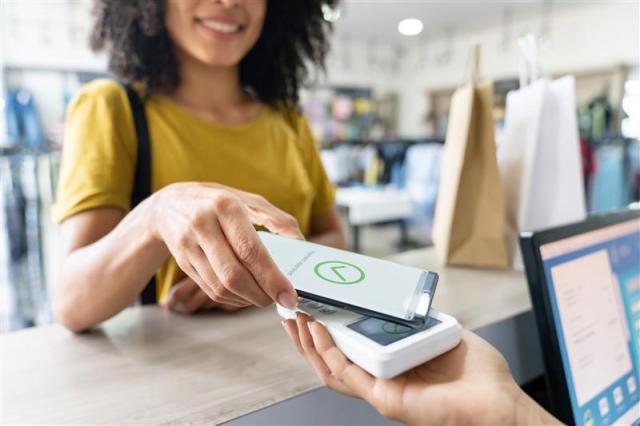Rev. Brenna Baker on celebrating the small acts of giving that surround us, and capturing the spark of generosity in your community.

Over the lead-up to Christmas, I imagine you, like myself, needed to do at least a bit of offline shopping at a brick-and-mortar store. Maybe you needed a last-minute gift or a necessary ingredient for your famous eggnog. Whatever the case, most of us spent some time standing in lines, listening to the same holiday songs over and over, waiting for our items to be rung up.
Have you noticed anything different about that experience in recent years? The world of philanthropy has witnessed one major trend: there are many more invitations to give when you’re in a store and at the register. The cashier might ask, “Do you want to add $5 for the food bank, or for sick children, or sad animals?” These opportunities for generosity also appear at the self-checkout, where you can choose larger amounts to give, or at a tap machine accompanied by a friendly volunteer on the way out of the store.
This is an interesting trend to watch. According to many experts, generosity and giving are on the decline in Canada. If you only look at donations eligible for tax receipts, that’s true. Yet there’s so much generosity out there that we can’t track. Because of my work in stewardship, I like to pay attention to whether or not people give in these casual invitations. I’ve learned they tend to be more generous than we might expect. I’ve seen many from all walks of life saying yes to the invitation to add a donation to their bill. Having even been the friendly volunteer staffing a tap machine, I’ve been surprised by how moved people have been to give. A few felt the need to tell me why it was important to them to donate. These spur-of-the-moment acts of generosity, while not tax receipt-eligible, are still deeply meaningful to both donors and charities.
We in the church can learn a lot from these new ways of encouraging generosity. Even if fewer people are giving formal donations, I still believe most people consider themselves generous and want to be generous. We just don’t always make it easy for them.
Consider that invitation to add a $5 donation to your grocery bill. For most people out shopping, adding that amount to their order is simple. No extra tap of the card, no cheques, no digging through pockets for cash.It’s also easy to give at the register because it’s a relational interaction—no matter how brief. I imagine that surely most of us are less likely to give at the self-checkout than if asked by a flesh and blood cashier, or a volunteer wishing us a Merry Christmas. Personal interaction is critical in deepening generosity. We are more likely to feel warmth towards an invitation if a real person like us is making it, and if we feel real people will receive the benefits of our donation.
We also know that Canadians are more likely to support causes addressing basic human needs like food, shelter, and health—needs these in-store donations are often geared towards. As I stand there with my huge cart of groceries, it’s hard to deny someone else those necessities. People want to give—and give often—to charities that can make an immediate and tangible difference in their communities.
Yet when we invite people to give in a church context, we often don’t make it this easy, or as directly about the causes people care about. Imagine those sitting in your sanctuary on a Sunday morning. When the call for offering comes around, do you tell them how they can give, knowing that many will not have cash or a cheque for the plate? Is the invitation warm and welcoming? Do you connect it to the people who are actually impacted? Are you inviting them to give to causes they care about, beyond the broad category of “the church and its ministries”?
Your church has an advantage that other charities don’t. When I give that small, quick donation at the register, there’s no way for the charity to follow up with me or get to know me. In your community of faith, however, you can easily follow up to thank your donors. You can get to know what they care about, and show them how their giving makes a difference.
In our Called to be the Church: The Journey stewardship program, you’ll learn low-barrier methods that make giving easy and allow people to practice their natural generosity. For instance, collecting socks for the unhoused or gift cards for underserved groups are simple, personal gifts that support causes most people care about. People like giving this way because they can touch the socks and envision the warmth and comfort they’ll bring. The challenge is to move them into consistent financial giving, which allows your ministry to make a more lasting impact.
The good news for your community of faith is that people are generous, even if their generosity is now expressed in many different ways. How will you make your invitation to generosity easy, personal, and meaningful?
Need some help getting started? Contact your local stewardship support staff today!
The Rev. Brenna Baker is Community of Faith Stewardship Support Staff for the United Church’s three Southwestern Ontario Regions.
The views contained within these blogs are personal and do not necessarily reflect those of The United Church of Canada.